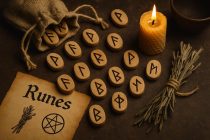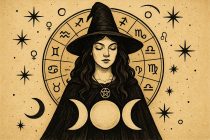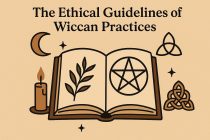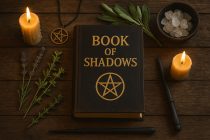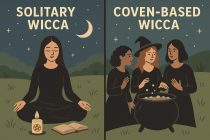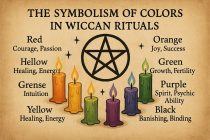Understanding Wiccan Principles
Wicca, a modern pagan religion, resonates deeply with themes of nature, ritual practices, and the harmonious balance between humans and their natural surroundings. Individuals who incorporate Wiccan principles into daily life aim to embrace these themes in practical and meaningful ways, establishing a lifestyle that is both spiritually fulfilling and environmentally conscious.
The Role of Nature
At the heart of Wiccan practice lies a profound reverence for nature. For practitioners, engaging with the environment is not merely a hobby but a spiritual endeavor that deepens their connection to the earth. This engagement can manifest in various forms, such as gardening, taking long walks in the woods, or simply observing the changing of the seasons. These activities allow individuals to cultivate a deeper appreciation for the natural world and can contribute to a more mindful existence. Regularly spending time outdoors and being observant of natural occurrences can help maintain this connection, fostering a sense of peace and belonging.
Observing the Sabbats
The Wiccan calendar year is marked by eight significant Sabbats, each representing a different seasonal festival. These celebrations, which include events like Samhain, Yule, and Beltane, provide opportunities for Wiccans to connect more deeply with nature’s cycles. Integrating the observance of Sabbats into everyday life can vary in complexity; some may choose to acknowledge these days with simple acts like lighting a candle or preparing special meals, whereas others might participate in elaborate rituals that incorporate music, dance, and meditation. Through these celebrations, Wiccans aim to align themselves with the natural cycles and rhythms of the Earth, fostering a deeper bond with the environment.
The Wiccan Rede and Ethical Living
A cornerstone of Wiccan belief is encapsulated in the Wiccan Rede’s guiding phrase, “An it harm none, do what ye will.” This principle emphasizes the importance of ethical living and urges practitioners to make choices that do not cause harm to themselves, others, or the environment. In daily life, this may involve being vigilant about the impact of one’s words and actions, choosing sustainable and ethically sourced products, or dedicating time to community service. By adhering to these principles, Wiccans strive to live harmoniously with those around them and to minimize their environmental footprint.
Practicing Mindfulness
Mindfulness is a fundamental element of Wiccan beliefs and practices. It entails living in the present moment and being attuned to the world around us—a concept that closely aligns with many aspects of Wicca. Practicing mindfulness might involve engaging in meditation, breathwork, or dedicating moments throughout the day to focus on one’s surroundings. These activities can enhance awareness and presence, allowing individuals to appreciate life’s nuances and deepen their connection to both the physical and spiritual worlds.
Utilizing Rituals and Symbols
Rituals and symbols are valuable tools for Wiccans, serving as a means to communicate intentions and connect with the divine. By incorporating simple rituals into everyday routines, practitioners can create a sense of sacredness in their lives. For instance, starting the day with a short affirmation can set a positive tone, while ending it with a gratitude exercise can foster a spirit of appreciation. These small rituals bring moments of awareness, transforming mundane activities into meaningful practices.
Using Symbols in Daily Life
Symbols such as the pentacle or various natural elements hold significant importance in Wicca and can be integrated into daily life to reinforce personal intentions and spiritual beliefs. Wearing jewelry featuring meaningful symbols, setting up altar spaces at home, or carrying small stones or crystals can serve as tangible reminders of one’s spiritual path. These symbols provide a sense of comfort and strength, supporting Wiccans in navigating life’s challenges while remaining true to their principles.
Building Community Connections
Community plays a vital role in Wiccan practice, with a strong emphasis on forming connections with others who share similar beliefs. Engaging with a community may involve joining a local coven, participating in metaphysical groups, or attending public rituals and events. Connecting with like-minded individuals, either through in-person gatherings or online forums, provides opportunities for support, learning, and shared purpose. These interactions can enhance one’s practice, offering new perspectives and practices that enrich their spiritual journey.
Resources and Continuous Learning
For those interested in deepening their understanding and practice of Wicca, an abundance of resources is available. Books by recognized authors offer insights into the religion’s history, principles, and rituals. Workshops and online courses also provide opportunities for practical learning and skill development. By exploring such resources, individuals can foster ongoing growth in their practice and gain a deeper appreciation for Wiccan principles.
For further exploration of specific topics or to connect with others interested in Wiccan practices, numerous online platforms and forums offer spaces to engage with a broader community. These platforms facilitate the exchange of knowledge and experiences, helping practitioners feel less isolated in their spiritual endeavors and encouraging a sense of belonging.
The principles of Wicca offer a framework through which individuals can live more consciously and ethically, fostering a deep connection with nature and the divine. By embracing these principles, practitioners can cultivate a life that is rich in purpose and harmony with the world around them.


